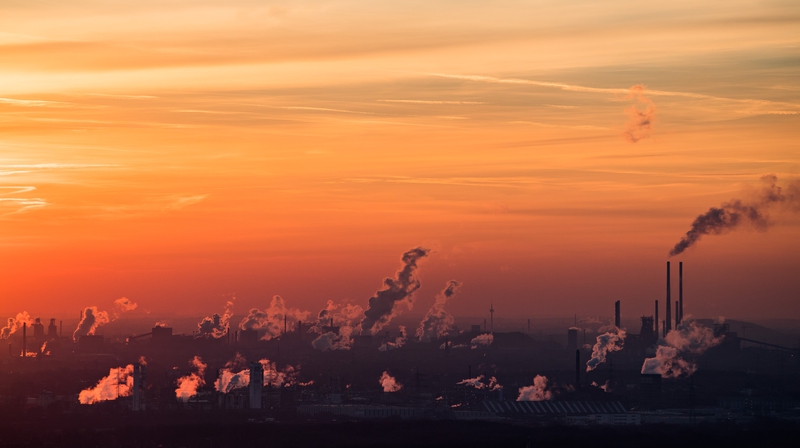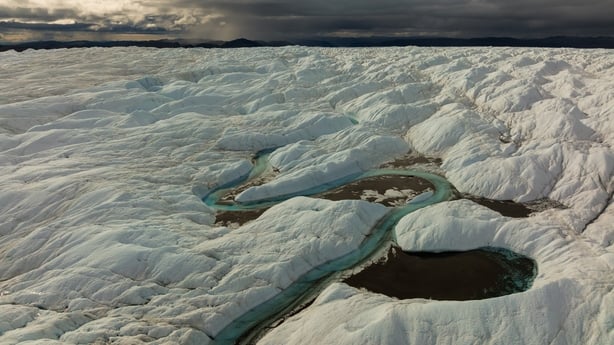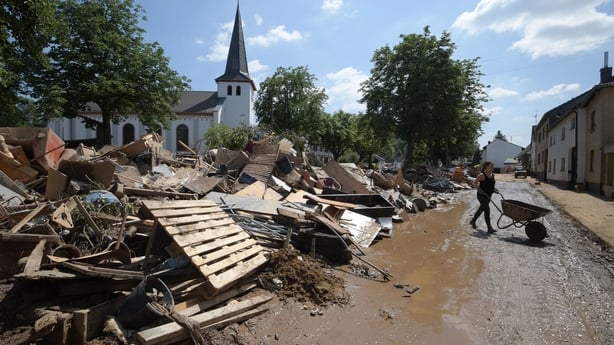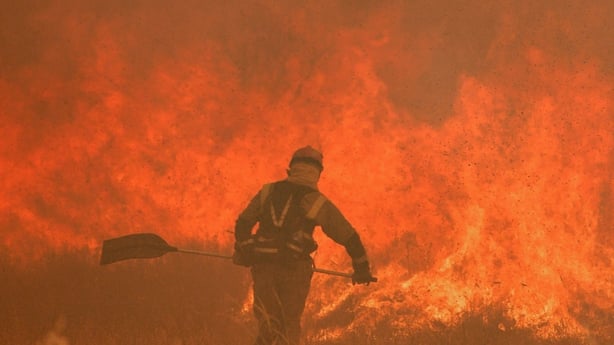Ancient DNA analysis sheds light on the early peopling of South America
Study provides most complete genetic evidence to date of complex migration routes in Ancient Central and South America
Peer-Reviewed PublicationIMAGE: THE FIRST SOUTHERN NORTH AMERICAN GROUPS ENTERED SOUTH AMERICA AND SPREAD THROUGH THE PACIFIC COAST SETTLING THE ANDES (YELLOW ARROW). AT LEAST ONE POPULATION SPLIT OCCURRED SOON AFTER, BRANCHING THE FIRST GROUPS THAT SETTLED THE ATLANTIC COAST (GREEN ARROW) FROM THE GROUPS THAT GAVE RISE TO THE ANCIENT POPULATIONS OF SOUTHERN CONE. NEW MIGRATIONS MAY HAVE THEN EMERGED ALONG THE ATLANTIC COAST, WITH A POSSIBLE ORIGIN AROUND LAGOA SANTA, HEADING NORTH TOWARD NORTHEAST BRAZIL AND PANAMA, AND SOUTH TO URUGUAY. EVENTUALLY, URUGUAY AND PANAMA WERE LINKED BY A SOUTH-TO-NORTH MIGRATION ROUTE CLOSER TO THE ATLANTIC COAST (PURPLE DOUBLE-HEADED ARROW). view more
CREDIT: FLORIDA ATLANTIC UNIVERSITY
The Americas were the last continent to be inhabited by humans. An increasing body of archaeological and genomic evidence has hinted to a complex settlement process. This is especially true for South America, where unexpected ancestral signals have raised perplexing scenarios for the early migrations into different regions of the continent.
Many unanswered questions still persist, such as whether the first humans migrated south along the Pacific coast or by some other route. While there is archaeological evidence for a north-to-south migration during the initial peopling of the Americas by ancient Indigenous peoples, where these ancient humans went after they arrived has remained elusive.
Using DNA from two ancient human individuals unearthed in two different archaeological sites in northeast Brazil – Pedra do Tubarão and Alcobaça – and powerful algorithms and genomic analyses, Florida Atlantic University researchers in collaboration with Emory University have unraveled the deep demographic history of South America at the regional level with some unexpected and surprising results.
Not only do researchers provide new genetic evidence supporting existing archaeological data of the north-to-south migration toward South America, they also have discovered migrations in the opposite direction along the Atlantic coast – for the first time. The work provides the most complete genetic evidence to date for complex ancient Central and South American migration routes.
Among the key findings, researchers also have discovered evidence of Neanderthal ancestry within the genomes of ancient individuals from South America. Neanderthals are an extinct population of archaic humans that ranged across Eurasia during the Lower and Middle Paleolithic.
Results of the study, published in the journal Proceedings of the Royal Society B. (Biological Sciences), suggest that human movements closer to the Atlantic coast eventually linked ancient Uruguay and Panama in a south-to-north migration route – 5,277 kilometers (3,270 miles) apart. This novel migration pattern is estimated to have occurred approximately 1,000 years ago based on the ages of the ancient individuals.
Findings show a distinct relationship among ancient genomes from northeast Brazil, Lagoa Santa (southeast Brazil), Uruguay and Panama. This new model reveals that the settlement of the Atlantic coast occurred only after the peopling of most of the Pacific coast and Andes.
“Our study provides key genomic evidence for ancient migration events at the regional scale along South America’s Atlantic coast,” said Michael DeGiorgio, Ph.D., co-corresponding author who specializes in human, evolutionary, and computational genomics and is an associate professor in the Department of Electrical Engineering and Computer Science within FAU’s College of Engineering and Computer Science. “These regional events likely derived from migratory waves involving the initial Indigenous peoples of South America near the Pacific coast.”
Researchers also found strong Australasian (Australia and Papua New Guinea) genetic signals in an ancient genome from Panama.
“There is an entire Pacific Ocean between Australasia and the Americas, and we still don’t know how these ancestral genomic signals appeared in Central and South America without leaving traces in North America,” said Andre Luiz Campelo dos Santos, Ph.D., first author, an archaeologist and a postdoctoral fellow in FAU’s Department of Electrical Engineering and Computer Science.
To further add to the existing complexity, researchers also detected greater Denisovan than Neanderthal ancestry in ancient Uruguay and Panama individuals. Denisovans are a group of extinct humans first identified from DNA sequences from the tip of finger bone discovered around 2008.
“It’s phenomenal that Denisovan ancestry made it all the way to South America,” says John Lindo, Ph.D., a co-corresponding author of the article who specializes in ancient DNA analysis and is an assistant professor in the Department of Anthropology at Emory University. “The admixture must have occurred a long time before, perhaps 40,000 years ago. The fact that the Denisovan lineage persisted and its genetic signal made it into an ancient individual from Uruguay that is only 1,500 years old suggests that it was a large admixture event between a population of humans and Denisovans.”
Previously at the Federal University of Pernambuco in Recife, Brazil, dos Santos and colleagues uncovered the remains of the two ancient humans from northeast Brazil, which date back to at least 1,000 years before present, and sent them to Lindo for DNA extraction and subsequent genomic sequencing and analyses. Raw data were then sent to FAU for computational analysis of the whole genome sequences from northeast Brazil.
Researchers compared the two newly sequenced ancient whole genomes from northeast Brazil with present-day worldwide genomes and other ancient whole genomes from the Americas. As of the publication date of the article, Lindo says that only a dozen or so ancient whole genomes from South America have been sequenced and published, in contrast to hundreds from Europe.
Apart from the occurrence of mass burials in the sites that yielded the samples from northeast Brazil, Uruguay, southeast Brazil and Panama, there is no other evidence in the archaeological record that indicate shared cultural features among them. Importantly, the analyzed ancient individuals from southeast Brazil are about 9,000 years older than those from northeast Brazil, Uruguay and Panama, enough time for expected and noticeable cultural divergence. Moreover, northeast Brazil, Uruguay and Panama, though more similar in age, are located thousands of kilometers apart from each other.
“This groundbreaking research involved many different fields from archaeology to biological sciences to genomics and data science,” said Stella Batalama, Ph.D., dean, FAU College of Engineering and Computer Science. “Our scientists at Florida Atlantic University in collaboration with Emory University have helped to shed light on an important piece of the Americas puzzle, which could not have been solved without powerful genomic and computational tools and analysis.”
Study co-authors are Amanda Owings, Ph.D., Emory University; Henry Socrates Lavalle Sullasi, Ph.D., Federal University of Pernambuco, Brazil; and Omer Gokcumen, Ph.D., State University New York at Buffalo.
This research was supported by the National Science Foundation, National Institutes of Health, and the Fundação de Amparo à Ciência e Tecnologia de Pernambuco.
- FAU -
CAPTION
The figure depicts the deep ancestries of the ancient individuals of the Americas and archaic ancestry in ancient South America and Panama. The pie chart radius reflects the proportion of shared archaic ancestry in the individual.
CREDIT
Florida Atlantic University
CAPTION
Researchers used teeth from ancient samples collected in archeological sites in northeast Brazil. Teeth are especially important in ancient DNA analysis because of the excellent preservation of biomaterials within the tooth.
CREDIT
Laboratório de Arqueologia Biológica e Forense, Universidade Federal de Pernambuco
CAPTION
The Alcobaça archaeological site, in which the skeletal remains of Brazil-12 (northeast Brazil) were unearthed.
CREDIT
Henry Lavalle, Universidade Federal de Pernambuco and Ana Nascimento, Universidade Federal Rural de Pernambuco
About FAU’s College of Engineering and Computer Science:
The FAU College of Engineering and Computer Science is internationally recognized for cutting edge research and education in the areas of computer science and artificial intelligence (AI), computer engineering, electrical engineering, biomedical engineering, civil, environmental and geomatics engineering, mechanical engineering, and ocean engineering. Research conducted by the faculty and their teams expose students to technology innovations that push the current state-of-the art of the disciplines. The College research efforts are supported by the National Science Foundation (NSF), the National Institutes of Health (NIH), the Department of Defense (DOD), the Department of Transportation (DOT), the Department of Education (DOEd), the State of Florida, and industry. The FAU College of Engineering and Computer Science offers degrees with a modern twist that bear specializations in areas of national priority such as AI, cybersecurity, internet-of-things, transportation and supply chain management, and data science. New degree programs include Master of Science in AI (first in Florida), Master of Science and Bachelor in Data Science and Analytics, and the new Professional Master of Science and Ph.D. in computer science for working professionals. For more information about the College, please visit eng.fau.edu.
About Florida Atlantic University:
Florida Atlantic University, established in 1961, officially opened its doors in 1964 as the fifth public university in Florida. Today, the University serves more than 30,000 undergraduate and graduate students across six campuses located along the southeast Florida coast. In recent years, the University has doubled its research expenditures and outpaced its peers in student achievement rates. Through the coexistence of access and excellence, FAU embodies an innovative model where traditional achievement gaps vanish. FAU is designated a Hispanic-serving institution, ranked as a top public university by U.S. News & World Report and a High Research Activity institution by the Carnegie Foundation for the Advancement of Teaching. For more information, visit www.fau.edu.
JOURNAL
Proceedings of the Royal Society B Biological Sciences
METHOD OF RESEARCH
Computational simulation/modeling
SUBJECT OF RESEARCH
People
ARTICLE TITLE
Genomic evidence for ancient human migration routes along South America's Atlantic coast
ARTICLE PUBLICATION DATE
1-Nov-2022












